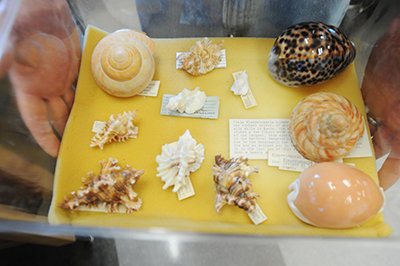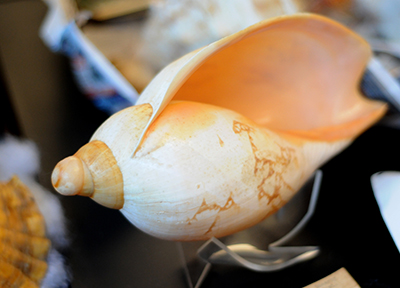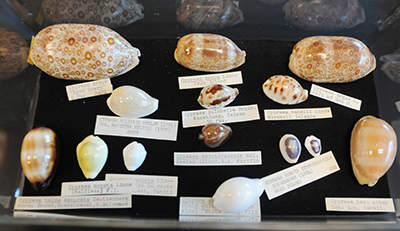News
Dalton State Receives Seashell Collection
09/23/15
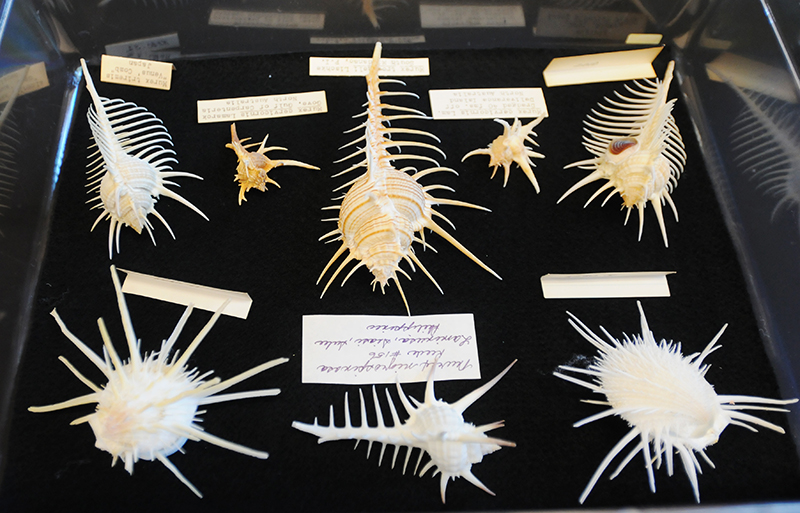
Dr. Celeste Humphrey won’t be surprised if a recent donation to Dalton State means the College now has the largest collection of seashells in the state of Georgia.
“It’s astounding, phenomenal,” said the associate professor of biology, who studied mollusks while obtaining her doctorate degree. “It is so impressive. It is a beautiful collection, full of fine specimens.”
The School of Science, Technology, and Mathematics recently received several thousands of shells, as well as other nautical items such as a glass sponge. The items were from the late Annie Mills Smith’s personal collection. Her family donated the items in her memory.
Smith was a resident of Dalton and an avid shell collector. She not only collected them, but labeled them with what type of shell, where it was found, and at what depth in the ocean it was found.
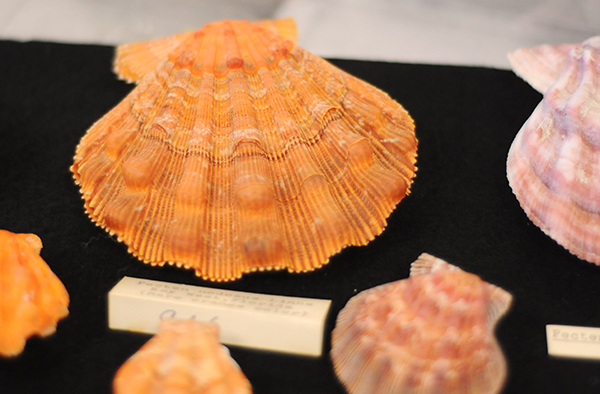 “Since they’re labeled all we have to do is confirm they are correctly identified, which is a lot easier than trying to make an initial identification,” Humphrey said. “She purchased a lot. These are bigger and better specimens than what you would find on a beach excavation while on vacation.”
“Since they’re labeled all we have to do is confirm they are correctly identified, which is a lot easier than trying to make an initial identification,” Humphrey said. “She purchased a lot. These are bigger and better specimens than what you would find on a beach excavation while on vacation.”
Dr. Randall Griffus, dean of the School of Science, Technology, and Mathematics, said the shells will be put on display in Peeples Hall and will be available for students and faculty to use for research.
“We are very fortunate to have received this gift,” Griffus said. “It’s such a large collection I don’t even know how to begin to quantify them yet. We’ve just started unpacking them. It is a benefit to our department and the College.”
Students will be able to conduct numerous studies using the shells, Humphrey said.
“This collection is complete enough for research,” she said. “God bless the family for donating these. Students can look at distribution since we know where each specimen was located. They can compare where each specimen was found. All shells have something to do with protecting the animal, and students will be able to study that. Faculty will be able to use the shells in labs – ecology, evolution, invertebrate, special topics – in several different areas of biology. I have only just begun to think of ways the shells can be used for teaching and learning.”
The shells have an array of colors and designs. Some have long spikes that the species creates for protection, and some have a spiraled shape.
“What a wonderful legacy for us to have here at Dalton State,” Humphrey said.
